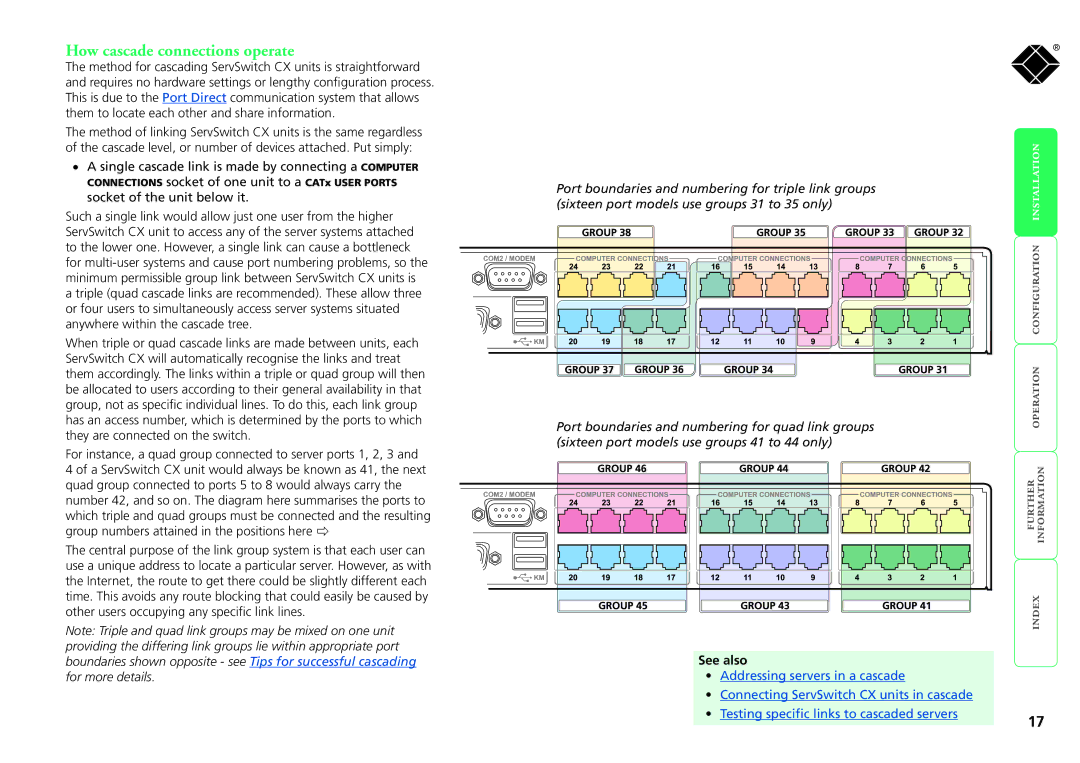
How cascade connections operate
The method for cascading ServSwitch CX units is straightforward and requires no hardware settings or lengthy configuration process. This is due to the Port Direct communication system that allows them to locate each other and share information.
The method of linking ServSwitch CX units is the same regardless of the cascade level, or number of devices attached. Put simply:
•A single cascade link is made by connecting a COMPUTER
connections socket of one unit to a CATx user portS socket of the unit below it.
Such a single link would allow just one user from the higher ServSwitch CX unit to access any of the server systems attached to the lower one. However, a single link can cause a bottleneck for
When triple or quad cascade links are made between units, each ServSwitch CX will automatically recognise the links and treat them accordingly. The links within a triple or quad group will then be allocated to users according to their general availability in that group, not as specific individual lines. To do this, each link group has an access number, which is determined by the ports to which they are connected on the switch.
For instance, a quad group connected to server ports 1, 2, 3 and
4 of a ServSwitch CX unit would always be known as 41, the next quad group connected to ports 5 to 8 would always carry the number 42, and so on. The diagram here summarises the ports to which triple and quad groups must be connected and the resulting group numbers attained in the positions here ð
The central purpose of the link group system is that each user can use a unique address to locate a particular server. However, as with the Internet, the route to get there could be slightly different each time. This avoids any route blocking that could easily be caused by other users occupying any specific link lines.
Note: Triple and quad link groups may be mixed on one unit providing the differing link groups lie within appropriate port boundaries shown opposite - see Tips for successful cascading for more details.
Port boundaries and numbering for triple link groups (sixteen port models use groups 31 to 35 only)
Port boundaries and numbering for quad link groups (sixteen port models use groups 41 to 44 only)
See also
•Addressing servers in a cascade
•Connecting ServSwitch CX units in cascade
•Testing specific links to cascaded servers
®
17
